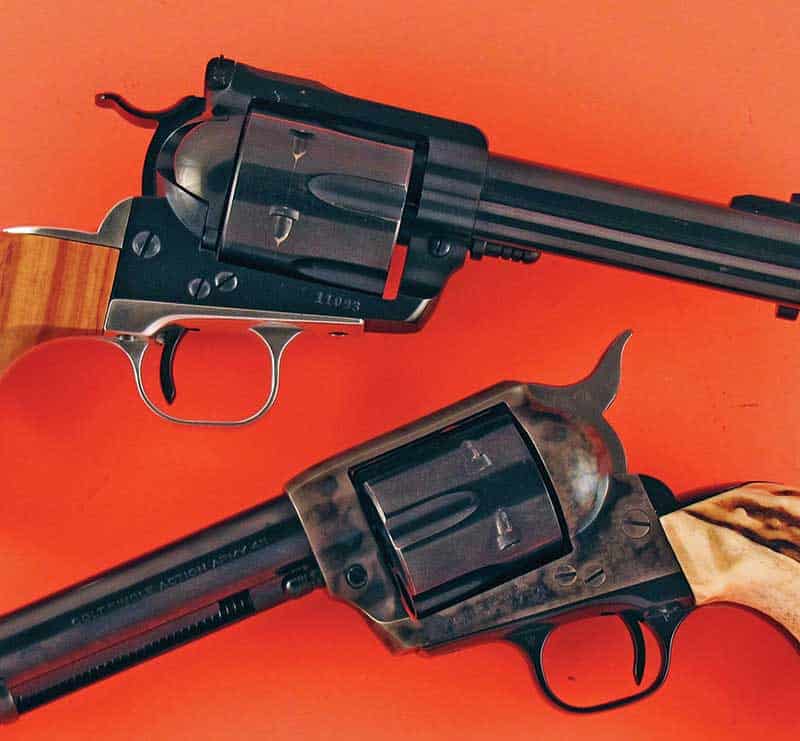Beware The Internet
Stupid Can Hurt
The Internet is a wonderful resource, although I fought against using it for several years simply because I did not know how valuable it could be I also fought against computers, digital cameras and cell phones for years not knowing how much work, time, money and energy they saved me. I was stubborn—still am for that matter.
The cell phone rides in my pick-up for emergency use only. It is never on unless I need to call. Normally I send in my articles and pictures by regular mail on a CD, however if something needs to be done in a hurry I can send the text plus one or two photos at a time directly to the editor. This ability can be exceptionally important when we have a very tight deadline. In addition to sending information back and forth, it is also possible to access millions of pieces of information. The Internet is actually in many ways a gigantic electronic library.
Information on virtually every manufacturer is at my fingertips as well as the ability to send and receive e-mails. There is much to be found that is interesting, instructive and even inspirational. The downside is there is also some pretty nasty stuff out there and you have to be discerning. The Internet can also be a nationwide gun store at our fingertips. Again, you have to be discerning here, and it is a good idea to know the person you’re dealing with, as well as only dealing with totally legal FFL transfers. Having said that, in recent times I have found two pre-27 5-Screw Smith & Wesson .357 Magnums as well as two rare .44 Smith & Wessons, all on the net. The latter two were a 5-Screw .44 Magnum and a 1950 Military .44 Special. All were purchased at excellent prices. But again, beware of whom you are dealing with!
Not only is the Internet filled with information, there’s probably an equal amount of misinformation. There are many places to find reloading information, however anyone would be very foolish to accept reloading information from someone posting anonymously on the Internet. Yet some people actually do this.
Reloading manuals are inexpensive, reliable and certainly much safer. The only safe place to find reloading information on the net is from well-respected and identified sources such as those maintained by powder and bullet companies. The world is full of crazies and there are actually people out there deliberately posting dangerous reloading information which can destroy a firearm and also harm the shooter, or worse. Be very, very careful about any reloading information posted on the net. Many reputable sites simply ban posting of any reloading information.
Mistakes
Elmer Keith did it, Skeeter Skelton did it and I as well as several other writers continue to do it. “It” is preaching the safe handling of traditional single actions. This was a single-action sixgun world in Keith’s early ranching days. In his writings from the late 1920s on, Keith always recommended carrying only five rounds in the traditional 6-shot revolver, with a hammer resting on an empty chamber. He told several stories of incidents occurring to those who did not follow this advice. One of the worst was that of a man and his wife out for a ride in an early Ford. The man placed his fully-loaded 7-1/2″ .45 Colt Single Action on the back seat. Back then, the roads were very rough. At one particular bad spot the Colt flew off the back seat, came down on the hammer spur, discharged and the bullet went through the seat and killed his wife.
Keith also recounted seeing several single actions slipped out of their holsters by the rope when the owner was roping cattle and one went off when the hammer hit a rock. He also told of three different friends carrying all six chambers loaded, who shot themselves in the leg when the stirrup of their saddle hit the hammer as they were saddling their horses. Keith learned his lesson the hard way also, when as a young man he was tracking cow thieves in Montana and packing two .45 Colt single actions. The one on his hip was loaded with five rounds, however the other one was “safely” carried in a shoulder holster with six rounds.
His horse stepped on a yellow jacket nest and started bucking and pitching down the mountain. The gun flew out of the shoulder holster, the hammer spur hit a rock, (they seem to be drawn to rocks like radar!) and the gun fired, fortunately missing both horse and rider. That was the last time Keith carried a fully-loaded traditional single action.
In my earlier years I often carried a Ruger .44 Magnum Flat-Top fully loaded with the hammer in a “so-called” safety notch. I must have had a guardian angel watching over me! More than one hunter traveling in brushy country has had the fully loaded single actions pulled out of his holster by a limb or bush, dropped on the hammer, once again hitting a rock and discharging. All pre-1972 3-Screw Ruger single actions, all Colt Single Actions, all USFA Single Actions and all replica single actions can only be safely carried loaded with five rounds with the hammer down on an empty chamber.
As far as I know, Skeeter Skelton was the first to actually share the easy way to load a traditional single action for safe carry. That is, “Load 1, Skip 1, Load 4.” This means load the first chamber, skip the second chamber, load the next four, carefully cock the hammer and very carefully let it down on the empty chamber which is now in the proper position. This should be practiced with five dummy rounds to make sure it can be done correctly.
Practice is also needed to know what to do if the sixgun is cocked and not fired. In the movies they always simply let the hammer down and shove it back in the holster; a practice guaranteed to bring disaster in real life. Practice should also be done with dummy rounds in this situation. When the gun is cocked and not fired, let the hammer down very easily and safely, bring it back to half cock and count the number of times it is necessary to advance the cylinder before bringing the hammer back to full cock and letting it safely down on an empty chamber. This should only be done with dummy rounds until the process is learned.
What brought this all about is an extremely irresponsible post, made anonymously of course, on a single-action website. The poster said, “Colt did create a safe position being the first click notch on the hammer… Use the first hammer notch for what it was intended, and that is to keep the hammer off the primer of a full cylinder.” I immediately wrote back in all capital letters for emphasis, “WRONG!! Bad idea!!!! More than one cowboy has been shot when the hammer was struck by something while the fully loaded sixgun was in the holster loaded with six rounds and a hammer in the so-called safety notch. Load one up fully, place the hammer in the “safety” notch, point the gun in a safe direction, and give the hammer a good smack with a piece of hardwood. You won’t recommend this dangerous practice anymore. We have been preaching the “Load 1, Skip 1, Load 4, Cock The Hammer And Let It Down On An Empty” for decades, now here you come saying it isn’t necessary.”
Of course, he had to respond with, “I am not in the habit of whackin’ the hammer with a stick of hardwood when the gun is in the holster or in my hand. I would much prefer the old cock the hammer and shooting method when the gun is in my hand.” That, of course, revealed his irresponsible attitude and others start chiming in. One had carried his Ruger 3-Screw .357 Blackhawk fully loaded. He dropped it, it landed on the hammer, fired and put a bullet through his ribs. He said: “I had plenty of time to think about how this could have been avoided. I am firmly in the ‘leave the hammer down on an empty chamber camp.’”
Another shared the story of a fellow who was carrying a fully loaded, traditional single action as a guard on a money truck. He was loading his truck when the door swung shut, hit the hammer on his gun and fired it. He was shot in the leg and never went back to work.
Use the Internet with great care and discernment; bad advice, even dangerous advice is readily available. Be careful out there.
Click Here To Read More CampfireTales

Get More Revolver Content Every Week!
Sign up for the Wheelgun Wednesday newsletter here:





